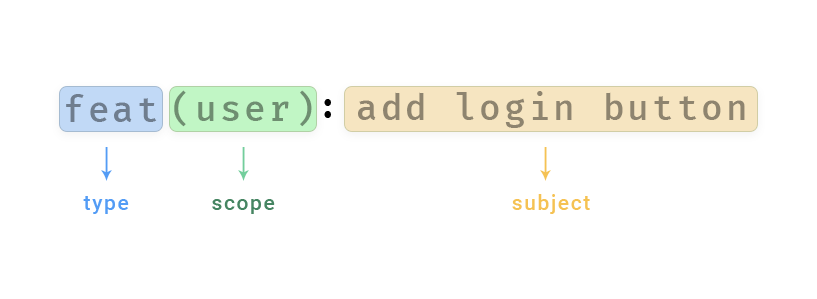A semantic version is a number that consists of three numbers separated by a period. For example, 1.4.10 is a semantic version. Each of the numbers has a specific meaning.
| Major change | Minor change | Patch change |
|---|---|---|
| The first number is a Major change,meaning it has a breaking change. | The second number is a Minor change, meaning it adds functionality. | The third number is a Patch change, meaning it includes a bug fix. |
It is easier to look at semantic versioning as Breaking . Feature . Fix.
It is a more precise way of describing a version number that doesn’t leave any room for interpretation.
To make sure that we are releasing the correct version — by correctly incrementing the semantic version number — we need to standardize our commit messages. By having a standardized format for commit messages, we can know when to increment which number and easily generate a release note. We are going to be using the Angular commit message convention, although we can change this later if you prefer something else.
It goes like this:
<header>
<optional body>
<optional footer>
The header is mandatory. It has a special format that includes a type, an optional scope, and a subject.
The header’s type is a mandatory field that tells what impact the commit contents have on the next version. It has to be one of the following types:
- feat: New feature
- fix: Bug fix
- docs: Change to the documentation
- style: Changes that do not affect the meaning of the code (e.g. white-space, formatting, missing semi-colons, etc.)
- refactor: Changes that neither fix a bug nor add a feature
- perf: Change that improves performance
- test: Add missing tests or corrections to existing ones
- chore: Changes to the build process or auxiliary tools and libraries, such as generating documentation
The scope is a grouping property that specifies what subsystem the commit is related to, like an API, or the dashboard of an app, or user accounts, etc. If the commit modifies more than one subsystem, then we can use an asterisk (*) instead.
The header subject should hold a short description of what has been done. There are a few rules when writing one:
- Use the imperative, present tense (e.g. “change” instead of “changed” or “changes”)
- Lowercase the first letter on the first word.
- Leave out a period (.) at the end.
- Avoid writing subjects longer than 80 charactersThe commit body.
Just like the header subject, use the imperative, present tense for the body. It should include the motivation for the change and contrast this with previous behavior.
The footer should contain any information about breaking changes and is also the place to reference issues that this commit closes.
Breaking change information should start with BREAKING CHANGE: followed by a space or two new lines. The rest of the commit message goes here.
copyrights © Marko Ilic, Mojib Wali

